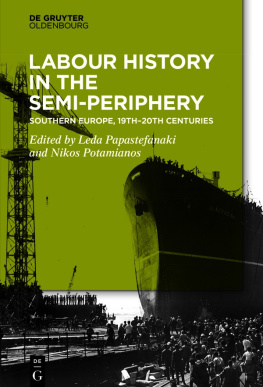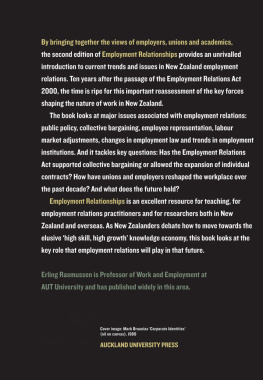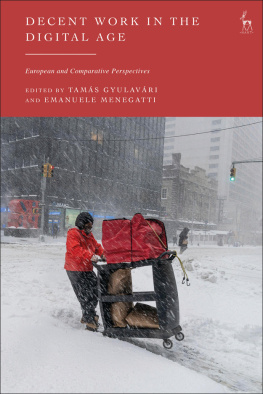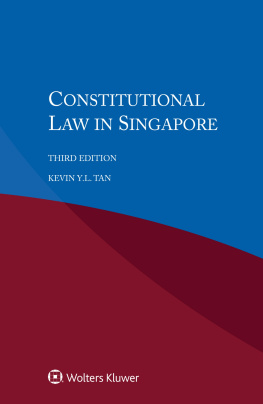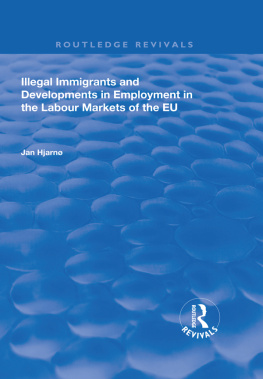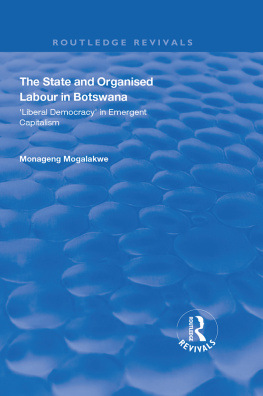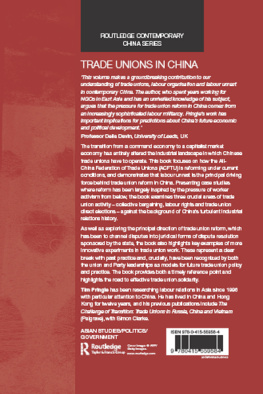Labour Law in Singapore
Ravi Chandran
This book was originally published as a monograph in the International Encyclopaedia of Laws/Labour Law and Industrial Relations.
Founding Editor: Roger Blanpain
General Editor: Frank Hendrickx
Volume Editor: Frank Hendrickx

Published by:
Kluwer Law International B.V.
PO Box 316
2400 AH Alphen aan den Rijn
The Netherlands
E-mail:
Website: lrus.wolterskluwer.com
Sold and distributed by:
Wolters Kluwer Legal & Regulatory U.S.
7201 McKinney Circle
Frederick, MD 21704
United States of America
Email:
DISCLAIMER: The material in this volume is in the nature of general comment only. It is not offered as advice on any particular matter and should not be taken as such. The editor and the contributing authors expressly disclaim all liability to any person with regard to anything done or omitted to be done, and with respect to the consequences of anything done or omitted to be done wholly or partly in reliance upon the whole or any part of the contents of this volume. No reader should act or refrain from acting on the basis of any matter contained in this volume without first obtaining professional advice regarding the particular facts and circumstances at issue. Any and all opinions expressed herein are those of the particular author and are not necessarily those of the editor or publisher of this volume.
ISBN 978-94-035-3685-9
e-Book: ISBN 978-94-035-3690-3
web-PDF: ISBN 978-94-035-3691-0
2021 Kluwer Law International BV, The Netherlands
All rights reserved. No part of this publication may be reproduced, stored in a retrieval system, or transmitted in any form or by any means, electronic, mechanical, photocopying, recording, or otherwise, without the prior written permission of the publisher.
Permission to use this content must be obtained from the copyright owner. More information can be found at: lrus.wolterskluwer.com/policies/permissions-reprints-and-licensing
The Author

Ravi Chandran graduated from the Faculty of Law, the National University of Singapore, in 1991. He did his pupilage at Messers Lee and Lee and was called to the Bar in 1992. He was in private practice for some time before he set off to do his Masters in Law at Queens College, Cambridge University. He returned in 1995 and since then has been teaching in the School of Business, National University of Singapore. He teaches various subjects, including Employment Law. He has published widely in the area of Employment Law, both locally and internationally, and his work has been cited in court judgments, books and journal articles. His opinion on Employment Law matters has been sought by, among others, law firms, government-linked organizations and the International Labour Organization. He was also the former President of the Asian Society of Labour Law Scholars.
List of Abbreviations
MLJ | Malayan Law Journal |
SLR | Singapore Law Reports |
SLR (R) | Singapore Law Reports (Reissue) |
SSLR | Straits Settlements Law Reports |
General Introduction
Chapter 1. General Background
1. GEOGRAPHY
1. Singapore is a small country in Southeast Asia. It is made up of sixty-three islands, including the main island. It is separated from Malaysia in the north by the Straits of Johor, and it is separated from the Riau Islands of Indonesia in the south by the Singapore Straits. Singapore in the past had a land area of over 500 square kilometres, but now through the process of land reclamation, it stretches over 700 square kilometres. Being a small country makes it easy to enforce laws effectively, including those relating to employment, such as the laws on health and safety and the illegal employment of foreign workers.
2. POPULATION
2. As of 2020, Singapore has a population of about 5.69 million, the vast bulk of whom live on the main island. Of the population, about 30% is made up of foreigners, that is, non-citizens and non-permanent residents. Thus, there is a high percentage of foreigners in Singapore. In terms of ethnic make-up, the Chinese make up roughly about 76% of the population and are the majority. Malays make up about 15%, Indians about 7% and others about 2% of the population. These figures are correct as of 2019. The increasing presence of foreigners in Singapore is part of the governments strategy to deal with the rapidly ageing local population and declining birth rates. The presence of a large foreign work force also has implications in the field of employment law and industrial relations. For instance, after twenty-six years of being strike free, Singapore faced a strike in 2012 by a group of foreign bus drivers who were not aware of or familiar with local laws.
3. POLITICAL AND JUDICIAL SYSTEM
3. Singapore is a republic, and executive power is vested in the cabinet headed by the Prime Minister. It follows a unicameral system. Parliamentary elections have Though the President has some important powers, the Presidents role is largely ceremonial. Since Singapore is largely governed by one party, this makes it easy for laws, including employment laws, to be passed quickly to deal with issues that may be a pressing concern for society, such as health and safety at work or declining birth rates which may be due to maternity benefits not being attractive enough.
4. The Constitution of Singapore, which is the supreme law of the country,
5. In terms of the legal system, having been a British colony, Singapore follows the common law system, whereby besides written laws, judge-made laws can act as binding precedents. In relation to the field of employment law, there are many written laws that will be referred to later. However, there is also a huge body of judge-made case law governing various aspects of employment. It should also be highlighted that Singapore abolished the jury system in 1970 and that the Court of Appeal is the highest court in Singapore.
4. EMPLOYMENT STATISTICS
6. In Singapore, there is good participation in employment by people of both sexes. In 1970, about 81% of the males were in the workforce compared to 28% of the females. In 2020, the percentage of males in the workforce was about 75%, while that of females increased to about 61%. This trend is likely to continue well into the future. Increased female employment could be one factor that has contributed to declining birth rates. To address this issue, the government has taken a multi-pronged approach, including enacting specific employment-related laws to provide incentives for procreation.
7. Unemployment rates in Singapore are generally low. In more recent times, it has hovered around slightly over 2% with the exception of some years such as 2002, 2003, 2004, 2005, 2009 and 2020 when it was above 3%. Many policies contribute to the low unemployment figures, including the provision of subsidized training schemes which allow employees to upgrade their skills and remain employable and employment laws that are not overly burdensome on employers, which could have helped businesses to stay afloat in a highly competitive global environment, thereby not having to retrench employees.
5. SOCIAL AND CULTURAL VALUES
8. Singapore has a diverse culture with several languages spoken, and religions practised. Nonetheless, by and large, Singapore society is conservative and law-abiding. However, as it evolves, things are slowly changing, especially among the younger members of the population. This has further accelerated with the growth of the Internet and social media. All this could have an impact on the development of employment law in Singapore in the years to come.
Next page

